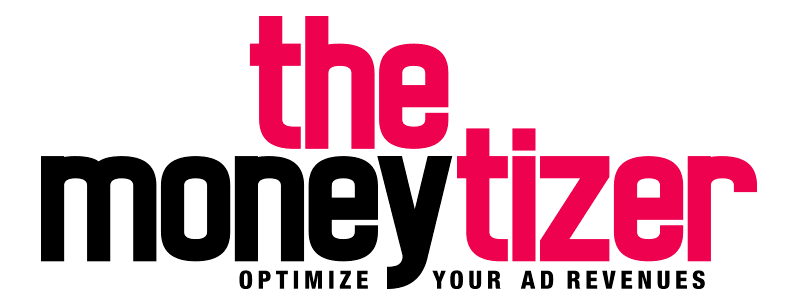Creating a website is the possibility to opt for a reliable business model of monetization. To do so, The Moneytizer has chosen an offer based on header bidding. It is a technology used by publishers, advertisers and advertising networks to sell their ad inventory simultaneously, using programmatic.
Some will advise you to use the Google Adsense solution. However, The Moneytizer will open the doors to a world in which you will have the opportunity to be connected to a vast choice of advertising agencies. Our goal? To offer you more ad units and more flexibility in the set up of your ad spaces.
In this article, it will be a question of understanding in detail, what is header bidding and to bring you details on the confrontation: header bidding vs waterfall.
Waterfall, header bidding… The Moneytizer focuses on the best monetization strategies for its customers. Let’s find out more about these themes.
What is a waterfall auction?
Publishers are looking to optimize their fill rate to increase their revenues. This way, if they reach 100%, this will mean that there will always be an ad that’s displayed. In addition, the ad can be seen in any country, regardless of the visitor who views the ad, although it will obviously be tailored to their audience.
In order to fill the ad spaces, the publishers call upon a maximum of partners. The latter use an ad server to list the various partners and give priority to the best buyers.
Thus, the buyer who shows up first buys the best spaces with the best visibility, and then the quality and price of the remaining spaces decrease according to the ranking of the buyers.
Note that in the waterfall auction model, partners are ranked according to their average historical performance against a publisher. What does it mean? If you have had the opportunity to sell ad space at a premium price in the past, your chances of getting impressions from the same publisher will be higher. If not, the next buyer may bid higher.
Waterfall has been the preferred method for many years, due to the simplicity of its technical configuration but also because publishers see in it the advantage of selling all the unsold advertising space. But… this comes at the expense of the revenue generated.
What is header bidding?
Header bidding allows publishers to offer advertising impressions to SSPs (Sell Side Platform) via their ad exchanges (automated platforms for selling and buying ad space) or trading desks (structures that handle the purchase of ad space).
In concrete terms, header bidding allows publishers to offer all their inventory simultaneously to competing advertisers.
It presents itself as the solution capable of stopping the abuse of waterfall dominance and places all buyers on the same scale on simultaneous auctions.
The advantage is that all the buyers participate in the auction and publishers can increase their yield by choosing the best bid in real time. In this system, all the buyers participate in the auction and the purchase of advertising space does not depend on the ranking of the buyers but on the competition between them to bid at the highest price. It works a bit like the stock market.
We are talking about real time bidding (RTB) and not an average or an estimate. Thus, header bidding allows publishers to generate more revenue.
Waterfall vs Header Bidding
Waterfall
The waterfall system stands out by helping publishers sell their ad space. It also has, as we mentioned earlier, a great ease of configuration.
However, publishers perceive a low return because SSPs bid on impressions in sequence and not in real time, i.e. simultaneously. In addition, the value of CPM price floors decreases due to the positioning of buyers in the auction rankings. To be more precise, the sale of an ad space at a high price may be missed by an interested buyer because of his order of arrival.
Therefore, if there is no interest at the first stated selling price, the selling price decreases until a potential buyer is found. This is called the “passback” process. There is therefore a lack of competition for ad impressions and therefore a decrease in the profitability of publishers.
Header Bidding
The header bidding represents a Javascript tag, able to:
· to make advertising calls in the direction of the partners’ demand;
· to evaluate the offers;
· to communicate with the ad server.
Header bidding wrappers
Header bidding wrappers represent a slightly more advanced version of header bidding, linked to programmatic buying in RTB, to monetize advertising spaces and ensure optimal speed of execution of bids.
What do wrappers do?
They simplify the configuration of the technology and make it easy to manage partner requests.
For a wrapper to work, it is necessary that:
· publishers paste the header bidding code in the header of the page;
· the wrapper launches an advertising call related to the partners’ request as soon as a user visits the site ;
· the wrapper sends the bids to the publisher’s SSP;
· the real-time auction is won by the highest bidder and its advertising space is displayed on the publisher’s page.
The header bidding has a configuration similar to that of the Waterfall because the publishers must insert in their header bidding, a line of computer code, indicated by each publisher.
Secondly, header bidding technology is not compatible with all advertising networks and therefore prevents them from bidding at the same time as other partners on advertising spaces.
Below, you’ll find a chart to compare the two bidding models:
| Waterfall | Header Bidding | |
| Operating mode | In sequences | Simultaneous |
| Gains | No difference with Google Adsense | Increase of 30% to 50% of revenues if compared with Google Adsense |
| Configuration | Simple | Complex – The Moneytizer offers a turnkey solution, easy to use |
| Ad Inventory | The remaining inventory | The whole inventory |
| Loading time | High | Low |
| Fill rate | Decrease because of the ranking system. | Increase thanks to the competition. |
| Price | Impression sales at floor price. | Higher thanks to the bid on each impression. |
| Difference in impressions measurement (this is the difference in metric calculations between sale and purchase at the end of a reference period such as the difference in time and latency on a site) | High | Low |
The advent of programmatic buying and RTB is changing the game for publishers as buyers participate in auctions simultaneously for real-time competition.
Competition drives up prices from the start and promotes impressions’ performance. This makes it possible to monetize spaces that would otherwise have remained unsold.
What about the use of Waterfall by publishers?
As we have seen throughout this article, the waterfall model does not seem to be optimal for increasing ad revenue. However, publishers can use it to organize their ad inventory or test it before switching to RTB which will give better overall returns.
Thus, the use of header bidding should be considered even if we note that the speed of page loading can sometimes slightly reduce. The bidding is done before the page is loaded, on the user side. A few extra milliseconds may be required. On the server side, the auction takes place in the ad server and solves the problem of page latency. However, there is less use of cookies on the server side, which is necessary for targeting. As a result, publishers can sell fewer impressions.
Putting an end to the opacity of the ad space ecosystem in the field of programmatic is a major challenge. That’s why we want to contribute to exchanges based on trust and transparency of our solutions, while responding to market demand.
Competing with multiple SSPs drives publisher monetization upwards. The testimonials from our current publishers confirm the success of our strategy and reinforce our belief that our service (dedicated customer success, wide choice of formats, fill rates, ease of use, all-in-one solution) helps them increase their performance.

